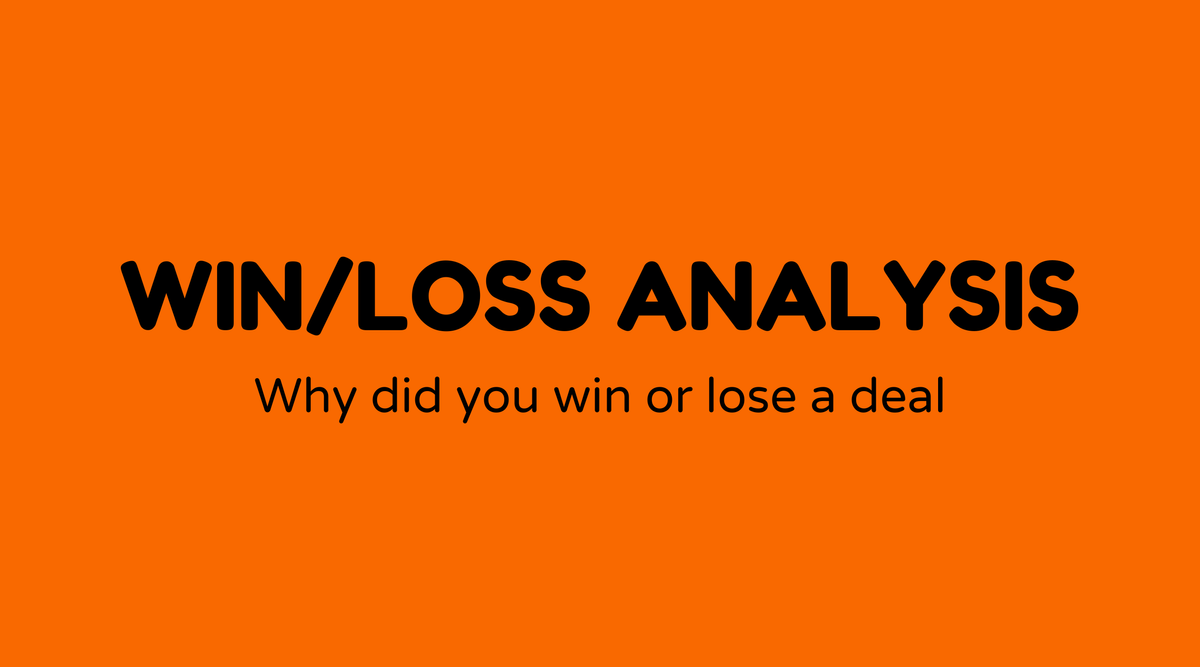Win/Loss Analysis

Overview of Win/Loss Analysis:
In the business environment, comprehending the reasons behind successful or unsuccessful deals is essential. This is where Win/Loss Analysis comes in. This process operates like a detective piecing together the puzzle of sales achievements and setbacks. By analyzing these results, companies gain insights that inform future strategies. It resembles a post-game analysis, identifying what was effective and what fell short, enabling organizations to enhance their performance.
Why Win/Loss Analysis Matters:
The importance of Win/Loss Analysis is significant. First, it offers a perspective on customer viewpoints, clarifying why clients prefer your service over alternatives. This helps refine sales methodologies and aligns product offerings more closely with market demands. Additionally, it turns lost deals into opportunities for learning, illuminating competitor strengths and your own areas for improvement. This analytical approach ultimately drives revenue growth and bolsters competitive standing, essential for maintaining an edge in the industry.
What is Win/Loss Analysis:
At its essence, Win/Loss Analysis involves a methodical evaluation of why sales opportunities are either secured or lost. It requires gathering data directly from clients and sales personnel after interactions. Think of it as an autopsy – revealing the factors that influenced the final decision. This includes pricing, product features, salesperson effectiveness, and competitor impact. Organizations often collaborate with external firms to ensure impartial feedback, providing an accurate overview of client decision-making processes.
How to Conduct Win/Loss Analysis:
Implementing an effective Win/Loss Analysis involves a structured method:
- Creating a Structured Framework: Determine which deals to analyze. Establish selection criteria to ensure a good mix of won, lost, and undecided deals.
- Identify Key Stakeholders: Engage with sales teams, customers, and competitors to gather varied insights.
- Conduct Interviews: Utilize a blend of open and closed questions to extract qualitative and quantitative data. Focus on understanding customer challenges and competitor advantages.
- Data Analysis: Examine feedback to find recurring themes. Employ software tools to manage sizable datasets and visualize insights.
- Implement Findings: Convert insights into actionable strategies. This might include training personnel, refining processes, or adjusting value propositions.
It’s important to regard this analysis as a continuous loop, consistently applying findings for ongoing enhancement.
Sample Agenda for Win/Loss Analysis Workshop:
A well-structured workshop can streamline the process, ensuring uniform application across teams. Here’s a sample agenda:
| Time Allocation | Activity | Description |
|---|---|---|
| 0:00 - 0:15 | Introduction and Objectives | Overview of purposes and goals for the analysis session. |
| 0:15 - 0:45 | Review Recent Deals | Examine specific won and lost cases to set context. |
| 0:45 - 1:30 | Stakeholder Interviews | Engage with sales and customer service teams for insights. |
| 1:30 - 2:00 | Break and Networking | Rest, informal discussions among participants. |
| 2:00 - 3:00 | Data Analysis and Group Discussion | Analyze data gathered; group interprets and debates findings. |
| 3:00 - 3:45 | Action Planning | Define concrete next steps based on analysis conclusions. |
| 3:45 - 4:00 | Wrap-up and Feedback | Summarize session outcomes and gather participant feedback. |
Examples of Win/Loss Analysis:
Let’s illustrate with real-world examples demonstrating the impact of Win/Loss Analysis.
- A SaaS company discovered many losses were attributable to an overly complex onboarding process. Streamlining the procedure led to a 20% reduction in customer attrition.
- A manufacturing firm found that adjusting its pricing strategy to better align with competitor offerings increased its market share by 15%.
- An IT service provider identified that many wins originated from personalized customer engagement, prompting them to expand their tailored service offerings.
These examples indicate how targeted insights can lead to meaningful improvements.
FAQs:
What questions should be asked during Win/Loss Analysis?
- Focus on open and close-ended questions related to client needs, satisfaction, purchase criteria, and perceptions of competitors.
How often should Win/Loss Analysis be conducted?
- Regularly, typically quarterly, to maintain an understanding of market dynamics.
Can feedback from Win/Loss Analysis affect product development?
- Yes, real customer needs often arise during analysis, informing future product enhancements.
What tools do organizations use for Win/Loss Analysis?
- CRM software, survey platforms like SurveyMonkey, and data analysis tools such as Tableau are popular options.
Should all deals be analyzed?
- Not necessarily. Focus on strategic, high-impact deals to maximize learning potential.
How can Win/Loss Analysis impact sales teams?
- It provides sales with direct customer feedback, refines approaches, and improves closing rates.



